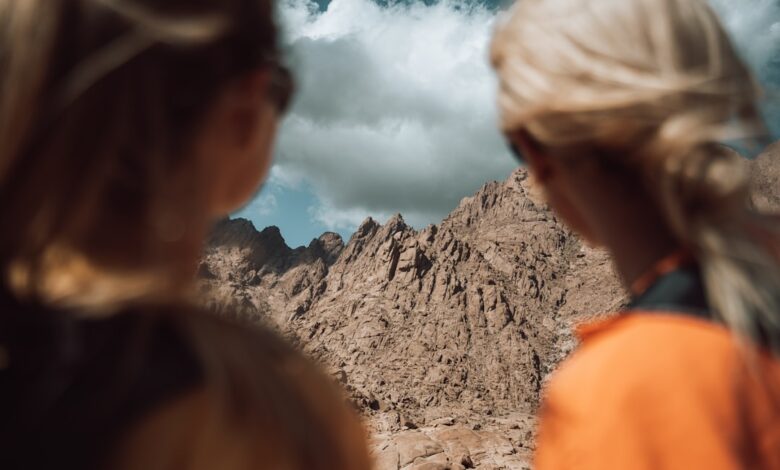Best Hiking Apps Free

Hitting the trails is a fantastic way to connect with nature, get some exercise, and clear your head. But before you lace up your boots, it’s smart to equip yourself with the right tools. Luckily, you don’t need to spend a fortune to get access to helpful resources. There are tons of awesome hiking apps that are totally free and can seriously enhance your outdoor adventures. As someone who’s spent years exploring local trails and national parks, I’m excited to share my top picks for the best free hiking apps that will help you stay safe, navigate with confidence, and discover new routes.

Why Use a Hiking App?
Think of a hiking app as your digital trail buddy. It can do everything from showing you exactly where you are on a map to tracking your distance and elevation gain. These apps can be lifesavers when you’re out in the wilderness, especially if you’re hiking in unfamiliar territory. A good hiking app can help you:
- Stay on the right path and avoid getting lost
- Find nearby points of interest, like water sources or viewpoints
- Monitor your progress and track your fitness
- Share your location with friends and family for safety
- Discover new trails and plan your next adventure
Beyond navigation, hiking apps often provide crucial information like weather forecasts, trail conditions reported by other hikers, and even offline maps in case you lose cell service. Many apps offer premium, paid versions, but you can still gain immense value using the free features. They offer excellent functionality without breaking the bank.
My Top Free Hiking App Recommendations
Here are a few of my favorite free hiking apps, along with what makes each one stand out:
AllTrails
AllTrails is probably the most well-known hiking app out there, and for good reason. It boasts a massive database of user-submitted trails all around the world. The free version is incredibly comprehensive. You can search for trails based on location, difficulty, length, elevation gain, and even dog-friendliness. One of the best things about AllTrails is the community aspect. Hikers leave reviews and recent condition reports, so you can get a good idea of what to expect before you even hit the trailhead. You can track your hikes using your phone’s GPS, save your favorite trails, and share your adventures with friends.
Hiking Project
Hiking Project is another excellent app powered by REI, a trusted brand in outdoor gear. It’s similar to AllTrails in that it has a large database of trails with detailed descriptions and photos. However, Hiking Project has a slightly different focus, emphasizing singletrack trails and mountain biking routes in addition to traditional hiking. The app also lets you download trails for offline use, which is invaluable when you’re venturing into areas with limited or no cell service. The interface is clean and user-friendly, making it easy to find exactly what you’re looking for.
MapMyHike
If you’re as interested in the fitness aspect of hiking as you are in the scenery, MapMyHike is a great choice. This app, from Under Armour, focuses on tracking your workout data. It uses GPS to record your distance, pace, elevation, calories burned, and more. You can also connect it to other fitness trackers and apps, like MyFitnessPal, to get a complete picture of your health and activity. While it has fewer trails than AllTrails or Hiking Project, MapMyHike excels at providing detailed performance stats and helping you monitor your progress over time. Plus, you can use it for other activities like running, walking, and cycling.
Gaia GPS (Free Version)
Gaia GPS is known for its incredibly detailed topographic maps and powerful navigation tools. While the full version of Gaia GPS requires a subscription, the free version still offers a ton of functionality. You get access to a basic set of maps, including topographic maps and satellite imagery, which are helpful for understanding the terrain and planning your route. You can also record your tracks and waypoints, and even create your own custom maps. The free version does have some limitations, like the inability to download maps for offline use, but it’s still a valuable tool for serious hikers and backpackers who want precise mapping capabilities.
PeakVisor
Ever wonder what the names of all those majestic mountains are? PeakVisor uses your phone’s camera and augmented reality to identify mountain peaks in real-time. Just point your camera at a mountain range, and the app will overlay the names and elevations of the peaks on your screen. It’s an incredibly cool and useful tool for anyone who loves mountain scenery. The free version is limited to a certain number of peak identifications per day, but it’s usually enough for casual hikers who just want to add some context to their views.
Safety First: Hiking Tips
While hiking apps are great, they’re not a substitute for common sense and proper preparation. Always prioritize safety when you’re out on the trail. Here are a few essential hiking tips:
- Tell someone where you’re going and when you expect to be back.
- Check the weather forecast before you leave and be prepared for changing conditions.
- Bring plenty of water and snacks.
- Wear appropriate clothing and footwear.
- Carry a first-aid kit and know how to use it.
- Be aware of your surroundings and watch out for wildlife.
- Don’t rely solely on your phone for navigation. Bring a map and compass and know how to use them.
- Respect the environment and leave no trace behind. Pack out everything you pack in.
Frequently Asked Questions
Do these apps work without cell service?
Some features, like downloading maps for offline use and using GPS for navigation, will work without cell service. However, other features, like viewing real-time trail conditions or sharing your location, will require a connection.
Are these apps accurate?
Most hiking apps use GPS, which is generally accurate. However, accuracy can be affected by factors like tree cover, terrain, and weather. It’s always a good idea to double-check your location with a physical map and compass, especially in remote areas.
Can I use these apps for backpacking?
Yes! Many hikers and backpackers use these apps to plan and navigate multi-day trips. Just be sure to download the necessary maps for offline use and bring a portable power bank to keep your phone charged.
Are the paid versions of these apps worth it?
That depends on your needs and how often you hike. The paid versions typically offer additional features like offline maps, ad-free experiences, and access to more detailed topographic data. If you’re a serious hiker or backpacker, the paid version might be worth the investment. However, the free versions are often sufficient for casual hikers.
So, there you have it: some of the best free hiking apps available to help you explore the great outdoors safely and confidently. Remember to always prioritize safety, plan ahead, and be respectful of the environment. Now get out there and enjoy the trails!
Related Posts
| Best Trail App Free |
| Best Free Hiking App |



